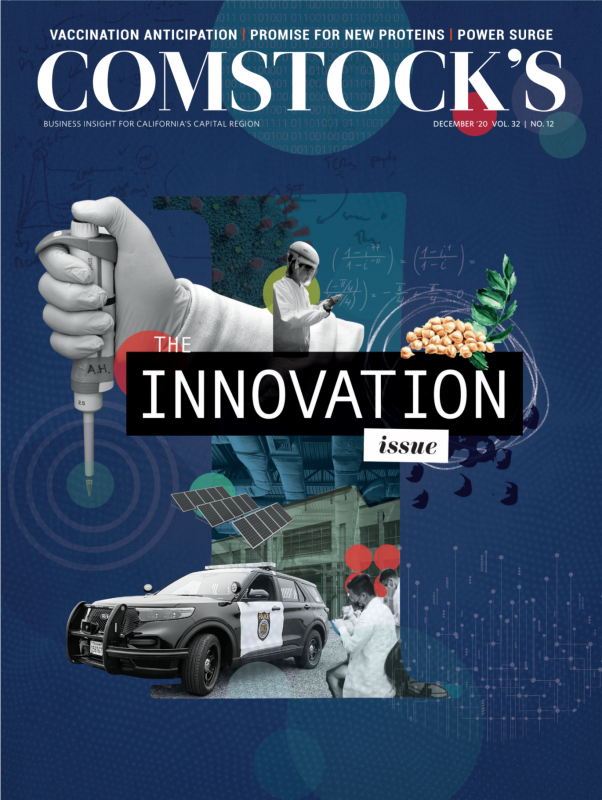During a year of divisiveness and polarization, there’s one thing a lot of us agree on: 2020 has been an awful year, and we can’t wait for it to be over.
The coronavirus pandemic overshadowed everything, causing unprecedented shutdowns of businesses, schools and churches; unemployment rates not seen since the Great Depression; and a crash of the stock market.
On top of the disruption caused by the pandemic, the resurgence of the Black Lives Matter movement (sparked by the killing of George Floyd in Minneapolis and the resulting protests) and California’s worst wildfire season on record (and the blanket of ash) were top stories this year.
But 2020 will forever be known as the year of COVID-19 — the death toll has surpassed 1.3 million worldwide, 250,000 in the United States and 18,000 in California — and it changed the way most of us go about our lives.
Wearing face masks in public spaces became mandatory. Concerts, art exhibitions, and convention and trade shows were canceled or postponed, and professional sports, after being delayed, were played either in isolated “bubbles” (NBA and NHL) or with few or no fans able to attend games (MLB and NFL).
Schools were forced to send students home to be taught remotely by teachers and by their parents, who had to balance the demands of careers and family. In September, women left the workforce at four times the rate men did, according to a story by NPR, with many citing the stress of homeschooling and working. Family events, such as birthdays and holiday gatherings, became verboten. Restaurants and other hospitality industries were hit particularly hard, with a survey by the National Restaurant Association from September reporting that 1 in 6 restaurants — about 100,000 nationwide — had “closed either permanently or long-term.”
There have been silver linings: the continuation of a hot real estate market (September’s median sales price in the Sacramento market was up 13.5 percent compared to 2019), the historically low interest rates (3.09 percent for a 30-year fixed mortgage in November in California), the major stock market indexes bouncing back and the ingenuity of many business owners to continue offering services in a safe way.
Many of us are hoping that stability in the economy and being able to congregate, work and learn with others without fear of contracting or transmitting the virus will come soon. We look forward to these things happening in 2021 and beyond to enable that.
1. A vaccine that will wipe out COVID-19. An effective vaccine is the only certain way to beat COVID-19, most medical experts agree, and there’s hope that one will be widely available in 2021 after Pfizer announced in November that preliminary data from its trial showed it to be more than 90 percent effective.
2. A return to pre-COVID employment. The unemployment rate in California in February was 3.9 percent, according to the Employment Development Department, but it soared to 16.4 percent in April. By September, it had dropped to 11 percent, giving hope that more people may be back to work next year.
3. A boom for restaurants and bars. Many owners adapted this year by adding outdoor seating — great examples are the closure from 18th to 19th streets of Capitol Avenue in Sacramento and the use of parklets along Sutter Street in Folsom. As new eateries open next year, I hope all will include outdoor dining options.
4. More diversity and affordability in housing. The Sacramento housing market is robust, but the soaring prices also make it very difficult to purchase for many, especially young adults. As more people migrate from the Bay Area in search of more affordable housing, we need to make sure that’s not pushing our homegrown talent out of the region or pushing more people into homelessness.
5. Schools reopen fully. One of the biggest disruptions this year has been the closure of schools and students being forced to engage in distance learning. One important aspect of attending school in person is socializing with friends and teachers; until schools can safely and fully reopen, this will remain a challenge to children’s mental health and educational outcomes.
6. Technology leading the way. Before the pandemic, many of us had not used videoconferencing. Digital meetings are now common and likely will continue to be a prominent way to communicate. Technology advances will play a key role as we continue to rebound from the economic downturn.
Comstock’s has focused much of its coverage in 2020 on the coronavirus pandemic and the shutdown’s effect on businesses, employees and our way of life. In the upcoming year, we look forward to a return to normal, to reporting about positive trends and sharing success stories.
–
Stay up to date on the effects of the coronavirus on people and business in the Capital Region: Subscribe to the Comstock’s newsletter today.





